
The post of Librarian, filled by full Academicians (William Wilson and his successor Denis Peploe were both elected whilst still Associates the year before their elevation to full Academician) was created in 1853 when the Library assumed increased importance and witnessed an expansion in its size and scope.
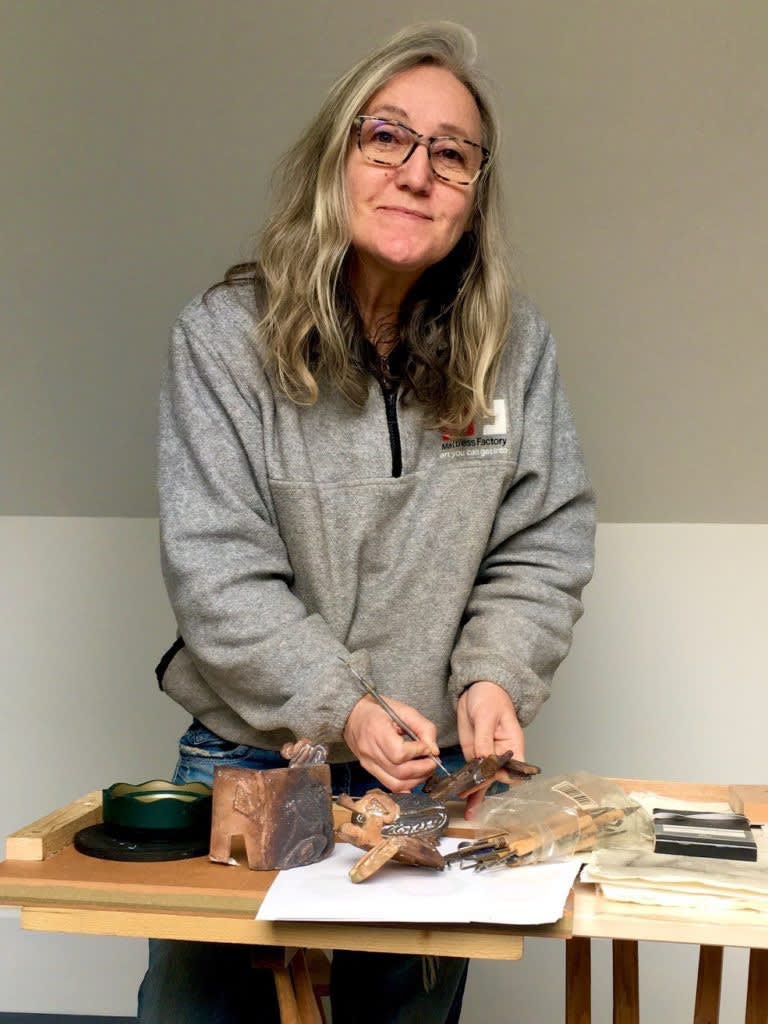
Fiona Dean RSA, our new librarian
Of earlier date are the four designated ex-officio Professorships which were established in the early days of the Academy, to be filled by Honorary Members (HRSA). One of these was Professor of Literature.
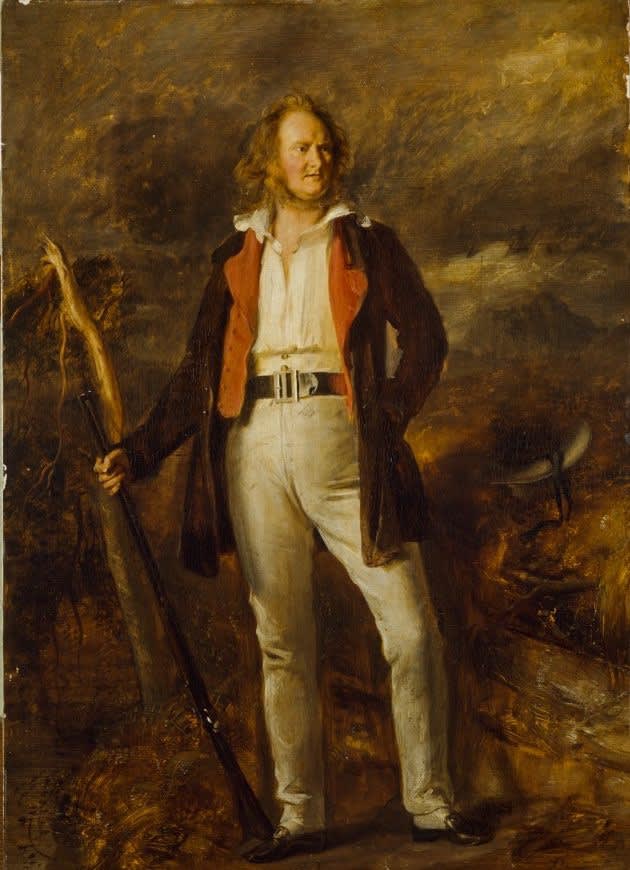
Thomas Duncan RSA (1807–1845), Professor John Wilson (1785–1854), Author and Moral Philosopher (Nom de Plume Christopher North), oil on millboard, c.1840. National Galleries of Scotland, Scottish National Portrait Gallery, PG 1369
John Wilson HRSA (1785-1854), Professor of Natural Philosophy at Edinburgh University, was the first Professor of Literature to the Royal Scottish Academy, which post he held from 1830 until his death in 1854 . An advocate and general “man-of-letters” Wilson was better known under the pseudonym “Christopher North” by which he wrote for Blackwood’s Magazine, of which was co-editor. Two of his epic poems were published in 1812 as “The Isle of Palms and Other Poems” and “The Magic Mirror.” A third and final collection “The City of the Plague, and other Poems” appearing in 1816 after he had settled in Edinburgh. His intellect was described as “gladiatorial.” In 1840 an ambitious 2 volume publication appeared titled ‘The Land of Burns.’ Profusely illustrated by engravings after paintings by the Academy’s Secretary David Octavius Hill RSA, the informative letterpress text was complied by Wilson.
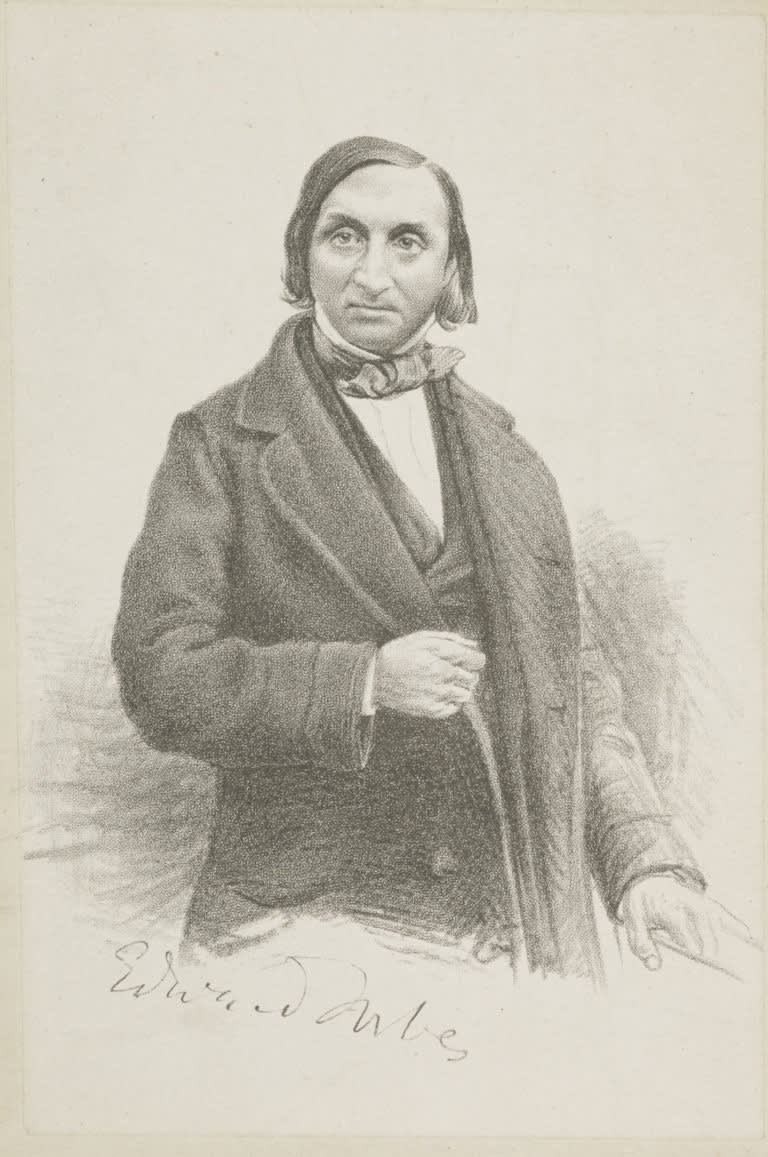
Attributed to Frederick Schenck, Portrait of Edward Forbes HRSA (1815-54), Naturalist, and RSA Professor of Literature, lithograph, about 1854 (Gifted by Mrs Elizabeth Muir, 2002)
Wilson’s successor Professor Edward Forbes (1815-54), was better known as an eminent Scientist who had written books on British Starfish and British Mollusca, and was a pioneer in the field of biogeography. Amongst his many appointments, Forbes was Curator at the Museum of the Geological Society of London (1842), Professor of Botany at King’s College, London (1842), and palaeontologist to the British Geological Survey (1844). In 1851 he was appointed Professor of Natural History to the Royal School of Mines, and became the youngest man elected President of the Geological Society (1853). He took the Chair of Natural History at the University of Edinburgh shortly before his death, and his short tenure of Professor of Literature also took place during the final few months of his life.

James Archer RSA (1822-1904), Professor John Stuart Blackie HRSA, oil on canvas, 1874 (Gifted by James Archer RSA, 1884)
Next came John Stuart Blackie HRSA (1809-95), described as one of the most prominent figures on the Scottish intellectual scene during the second half of the nineteenth century. Elected in 1855 he succeeded the shortest ever holder of the post and held it for longer than anyone before or since, for forty years, until his death in 1895. Though not a published poet himself, nonetheless Blackie was the butt of poems by an anonymous author (subsequently identified as a master at the Edinburgh Academy, by the name of George Merry) which were printed in The Scotsman in 1881.
Blackie’s successor, Professor David Mavor Masson HRSA (1822-1907) was appointed Professor of English Literature at University College, London, in 1852, and for some years from 1858, he edited the newly established Macmillan’s Magazine. In 1865 he was selected for the chair of Rhetoric and English Literature at the University of Edinburgh, and during the early years of his professorship actively promoted the movement for the university education of women. Masson did not publish any poetry himself, but wrote extensively on the work of British writers and poets including Carlyle, de Quincey, Chatterton, Milton, and Drummond of Hawthornden.
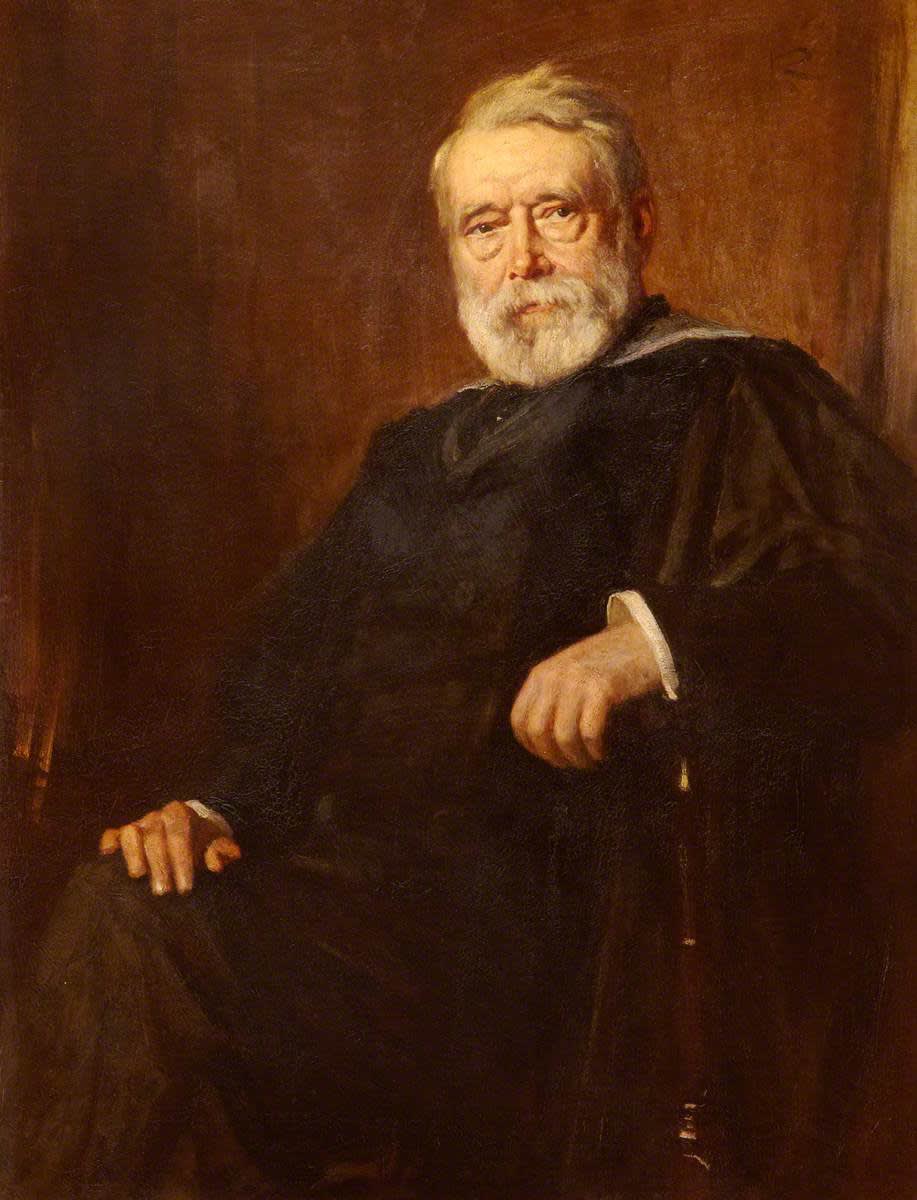
Sir George Reid PPRSA (1841-1913), David Mavor Masson (1822–1907), oil on canvas, c.1899. University of Edinburgh, EU0034
A former pupil of Masson’s, Peter Hume Brown, succeeded him as Historiographer Royal (Scotland) in 1908, and the same year filled the vacancy caused by Masson’s death as the RSA’s Professor of Literature. His appointment (like Forbes before) seems to sit slightly at odds with his office; he had published well-researched volumes on George Buchanan and John Knox prior to his appointment, and is best known for his 3 volume History of Scotland, a set of which he gifted to the RSA Library in 1911, rather than for any literary works per se. Today he is associated more with Scottish History, than with Literature.
Sir Herbert John Clifford Grierson HRSA (1866-1960) was appointed to the post on Brown’s death in 1927. At this point he was Knight Professor of English Literature at the University of Edinburgh, and had written and published extensively. His major area of interest lay with 17th Century English poetry, and it was thanks to his publication son the metaphysical poets, and John Donne in particular, that his importance as a scholar and his influence was established.
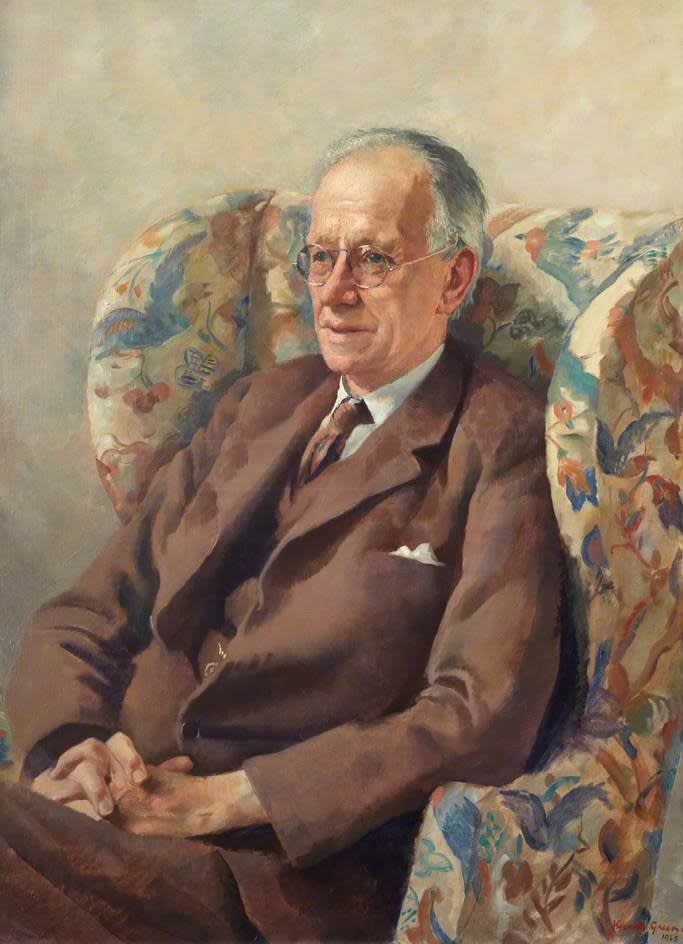
Kenneth Green (1905–1986), Sir Herbert John Clifford Grierson (1866–1960), oil on canvas, 1935. University of Edinburgh, EU0302. © the artist’s estate
Though not a poet himself, Grierson’s tenure has been followed by a succession of published poets, albeit that his immediate successor, Sir Edward Montague Compton Mackenzie (1883-1972) was better known as an author, political activist, and, amongst a range of other fascinating life facts, President of the Croquet Association, than as a poet. Nonetheless amongst the 90 or so books which Mackenzie wrote, were at least two volumes of his own poetry, including his very first book on any subject which came out in 1907 in a printing of 500 copies.
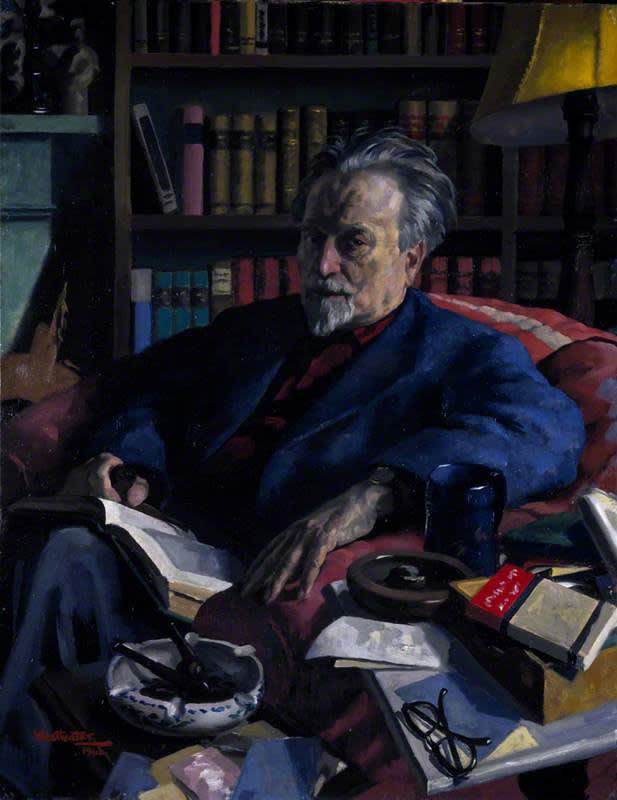
Robert Heriot Westwater (1905–1962), Sir Compton Mackenzie (1883–1972), Author, oil on canvas, 1962. National Galleries of Scotland, Scottish National Portrait Gallery, PG2505
Christopher Murray Grieve [Hugh MacDiarmid]HRSA (1892-1978) took on the mantle in 1974 after a two year hiatus. A key figure in the Scottish Renascence of the first half of the 20th Century, MacDiarmid was widely published. He is also the only one of the Professors of Literature thus far to have composed a poem to mark a specific milestone in the Academy’s history; which he composed for the 150th Anniversary celebrations in 1976.[RSA Ann Report 1976, Appendix, p.59] Following his death in 1978, three years elapsed before Norman Alexander MacCaig HRSA (1910-96) succeeded him. On MacCaig’s death Liz Lochhead (b.1947) was elected his successor, the first woman to be so honoured, but never took up the post, and Edwin Morgan HRSA (1920-2010) was elected in her place.
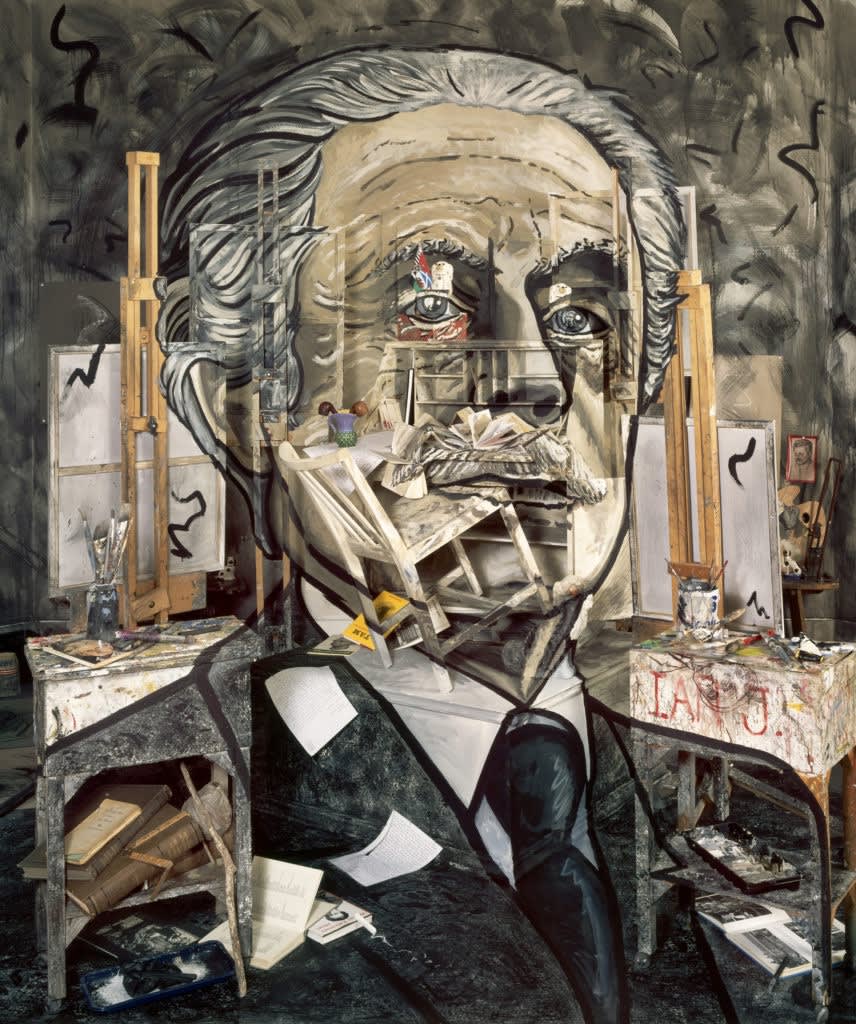
Calum Colvin RSA (b.1961), Portrait of Hugh MacDiarmid, colour photograph on acrylic, 2017 (Gifted by the artist following Ages of Wonder, 2018)
Breaking this poet hegemony is the current Professor of Literature. She is the first non-British born holder of the post, the Canadian short-story writer Alice Ann Laidlaw or Munro HRSA (b.1931), winner of the 2013 Nobel Prize for Literature.
It was not only the Professors of Literature who took up the pen to express themselves in poetry; a number of Members of the Academy have not only dabbled in writing verse, but several have committed their efforts to press.
One of the earliest, was Sir Joseph Noel Paton RSA (1820-1901). Paton was born in 1820 in the same calendar year as his sculptress sister Amelia (1821-1904) and not, as has been for long accepted the year after. Though prone to long periods of ill-health, Paton was an active member of the Academy. He designed the Presidential Medal and the Maclaine-Watters Medal, as well as a number of Invitations and Annual Exhibition Catalogues for the Academy. He served in the City of Edinburgh Artillery Volunteers, and was prolific in his own artistic output. He was one of the first Scottish Artists to show unclothed figures in his work, illustrated a number of books, including for Shelley’s poem “Prometheus Unbound,” and Coleridge’s “Rhyme of the Ancient Mariner.”

Joseph Noel Paton RSA, Compositions from Shelley’s Prometheus Unbound, Plate V, (London: 1844). (Purchased, 2015)
Many of his artworks are inspired by the history, legend, and ballad poetry of Scotland. Incidents from the lives of Wallace and Bruce, 1850; Thomas the Rhymer and the Queen of Faerie, 1851; and The Dowie Dens of Yarrow, 1862 all feature; whilst Dante, Spenser, Goethe, and the Arthurian poems furnish their quota of subjects also. Paton was knighted in 1866 in recognition of his appointment the previous year as Her Majesty’s Limner [painter] in Ordinary in Scotland. His first volume of poetry; inspiringly titled “Poems by a Painter,” was published in 1861, the year before his sister Amelia married the Academy’s Secretary, David Octavius Hill RSA. His second and final collection, “Spindrift,” appeared in 1867.
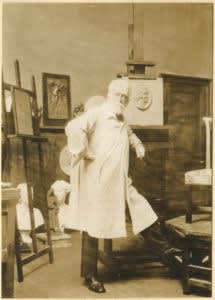
James Pittendrigh Macgillivray RSA (1856-1938), in his studio
Paton’s poetical exploits were matched by the sculptor James Pittendrigh Macgillivray RSA (1856-1938). A gifted sculptor, Macgillivray had a reputation as a forthright, sometimes forceful, and often cantankerous individual. An early critic of the Academy’s perceived bias towards Edinburgh and East coast artists, he remained vocal in any of its activities which displeased him even after his election, first as Associate in 1892, and full Academician 9 years later. His first volume, “Pro Patria” appeared in 1915. It contains poems spanning twenty years from 1895, many dealing with the subject of war and patriotism, both overtly English, and Scottish. A larger collection appeared in 1922 under the title “Bog Myrtle and Peat Reek,” its 61 poems were all written in Scots vernacular, between 1896 and 1922, and includes his ‘Anent the Scots Academy,’ which he wrote in February 1897 and concludes with the line; “And damn the Scots Academy.” What is striking about Macgillivray’s volumes are that he sought to honour the earliest Scottish printers Andrew Myllar and Walter Chapman. He took great pains in selecting the hand-made laid papers, decorative head and tail pieces, type, and binding of both works, which were issued in limited editions of 400 and 300 copies respectively of which 80 and 250 were numbered and signed by the artist.
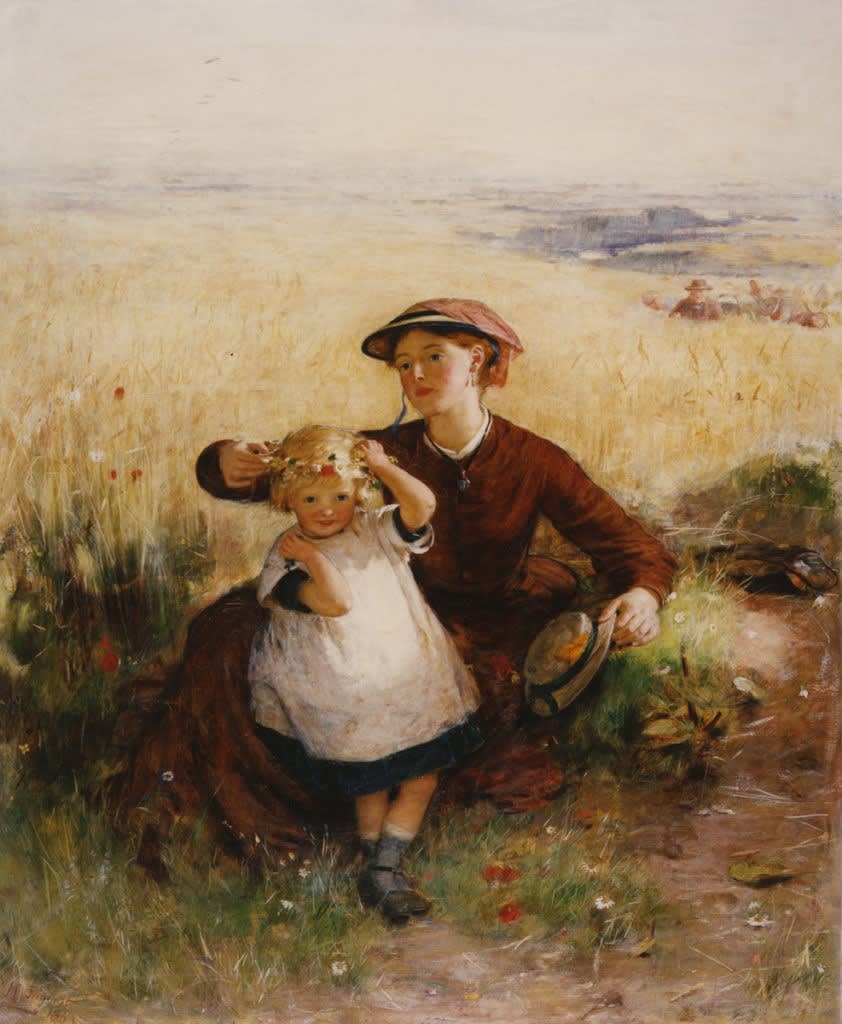
William McTaggart RSA (1835-1910), Dora, oil on canvas, c.1868-69. RSA Diploma Collection Deposit, 1870
In addition to some of these publications, the RSA Collections and Library also hold a number of works whose source can be traced back to a specific piece of poetry, such as ‘Dora’ by William McTaggart RSA (1835-1910) [2000.107, oil on canvas, c.1868-69, RSA] which illustrates lines from Tennyson’s poem of the same name. ‘The Poet’s Dream’ by John Faed RSA (1819-1902) originally carried 4 lines of text by way of a subtitle, and though there are similarities between this and the work of both Shakespeare, and Milton, they do not match either exactly, and may have been penned by Faed himself.
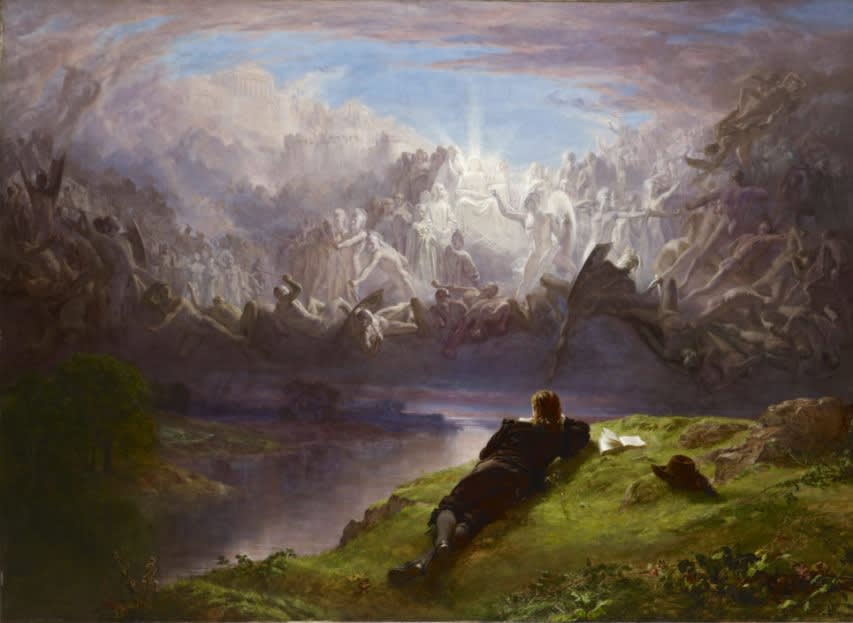
John Faed RSA (1819-1902), The Poet’s Dream, oil on canvas, c.1883. (Gifted by John Faed RSA, 1902)
There are numerous volumes of poetry whose illustrations have been provided by Members. One of the earliest to be so involved was David Scott RSA (1806-49) who provided a series of outline drawings for Coleridge’s ‘Tale of the Ancient Mariner.’ This, the first illustrated edition of the poem, was published by Alexander Hill, elder brother of D O Hill RSA, who presented a copy to the RSA Library.

David Scott RSA, Coleridge’s Rime of the Ancient Mariner, “title page and plate XII Death, and Life-in-Death dice for the Crew”. (Gifted by Alexander Hill, 1837)
Though not a member of the Academy, James Ballantine (1806-77) was one of those photographed by Robert Adamson, the pioneering photographer with D O Hill RSA, in 1843 alongside Hill and Dr George Bell. An important stained glass artist, Ballantine not only wrote a major treatise on painted glass but also the standard Biography on the painter David Roberts RA HRSA. He published his first volume of poetry and prose “The Gaberlunzie’s Wallet” under the pen-name ‘Jot’ in 1843.
Other poets to have their work illustrated more recently include George Bruce (1909-2002) whose last collection ‘Through the Letterbox,’ a book of 157 Haiku poems was illustrated by 143 illustrations by Dame Elizabeth Blackadder RSA (b.1931) was published posthumously in 2003. Like Noel Paton before, Blackadder is the current Her Majesty’s Limner in Ordinary in Scotland. That same year Willie Rodger RSA (1930-2018) collaborated with Liz Lochhead providing the illustrations for her collection of poems ‘The Colour of Black and White,’ which included a poem addressed to George Ralston Wyllie RSA (1921-2012).

Marion Smith RSA (b.1969) & Deryn Rees-Jones (b.1968), Vivam, oak and limewood (reliquary), ink on paper (poem), oak frames, glass, brass, felt, 2011 (Gifted by the artist, 2011)
More recently again, Marian Leven RSA(b.1944) has collaborated with Robin Robertson in (b.1955) incorporating the text of his poem into a screenprint titled ‘Pibroch,’[2013.002, screenprint, 2011, RSA], whilst ‘Vivam’[2013.007, mixed media, 2011, RSA] is another collaborative work. The wooden casket is by Marion Smith RSA (b.1969) and houses a series of small frames containing hand-written poetry by Deryn Rees-Jones (b.1968). Both of these works were created as part of the AHRC funded project ‘Poetry Beyond Text: Vision, Text + Cognition,’ in 2011. Recent RSA Annual Exhibitions have included a number of collaborative pieces between Members of the Academy working with contemporary poets.
Marian Leven’s husband, Will Maclean RSA in collaboration with The Paragon Press, in 1991 published a suite of ten etched plates to accompany ten letterpress poems in Gaelic (and with English translations) by various writers, under the title “A Night of Islands.” The prints were pulled at Peacock Printmakers in Aberdeen where Arthur Watson PPRSA, Beth Fisher RSA, Michael Agnew RSA and Jo Ganter RSA were all involved in the printing and editioning stages.
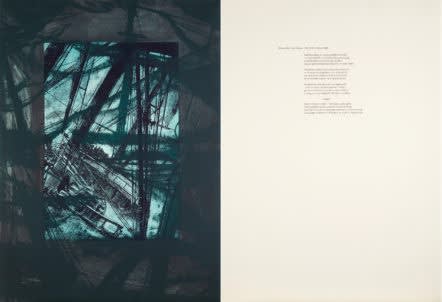
Will Maclean OBE RSA (b.1941) A Night of Islands, “Clann Adhaimh (Adam’s Clan)”, 10 colour etchings, 10 etchings, 10 printed poems, 1991-93. (Purchased from the artist, 2016)
It comes as no surprise that Robert Burns, or images after his poems and songs, is well represented in a number of media. A more recent continuum of this cross fertilization between those who create the written word and those who express themselves in paint, is exemplified by Alexander [Sandy] Moffat RSA (b.1943) and John Bellany HRSA (1942-2013). Whilst students at Edinburgh College of Art they, along with Alan Bold (1943-98) were in the habit of socialising with many of the leading poets of the day, including MacDiarmid, in their favourite Edinburgh hostelries, forging lifelong friendships with them.

James Nasmyth (1808-90), Robert Burns at Rosslyn Castle (painted from a sketch by the artist’s father, Alexander Nasmyth), oil on canvas, date unknown. (Gifted by Mrs Anne E Nasmyth, widow of the artist, 1891)

